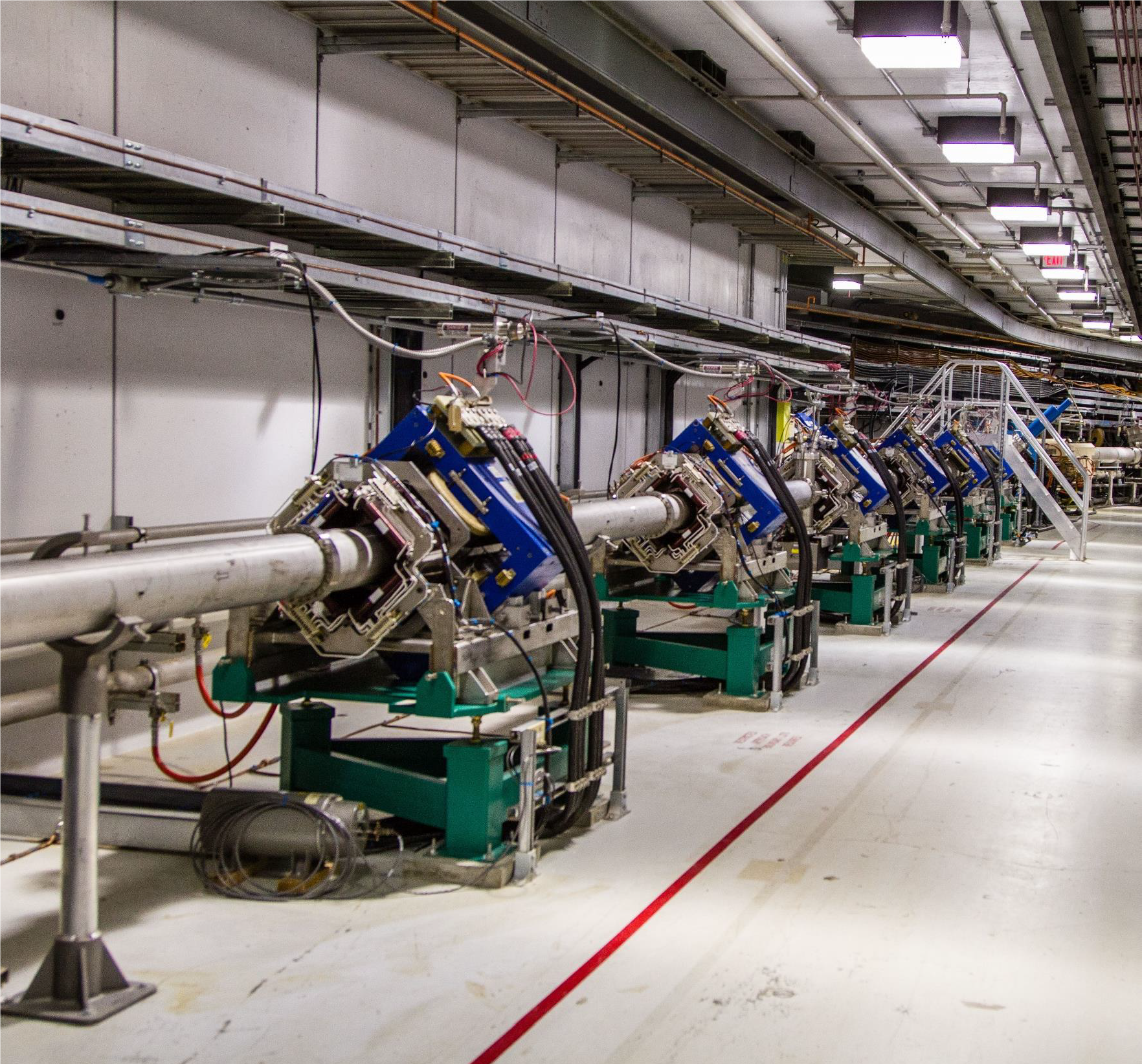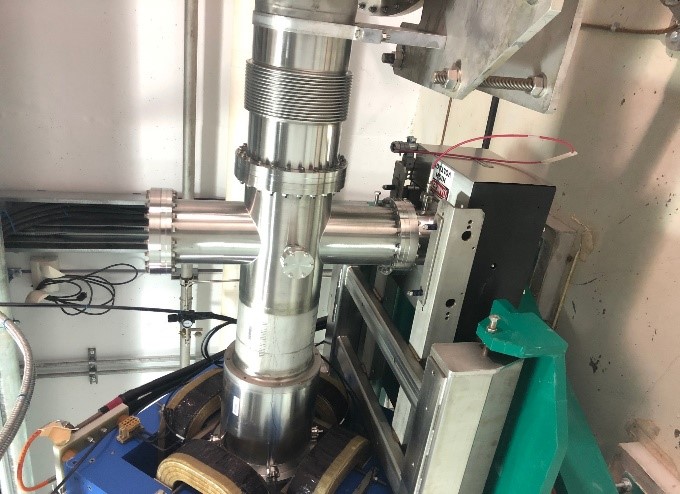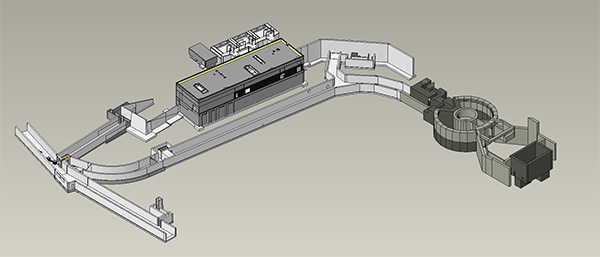Second Target Station Accelerator Systems
Splitting the beam
Accelerator modifications implemented by the Proton Power Upgrade (PPU) project will double the available proton beam power of the Spallation Neutron Source (SNS) to 2.8 megawatts. Part of this increased proton power will be used to support novel neutron experiments at the Second Target Station (STS).
After leaving the SNS Accumulator Ring, pulses of protons are guided through a beamline tunnel to the First Target Station (FTS). The STS project will construct a new beamline tunnel and divert 700 kilowatts of proton beam power to the STS. The project’s design will allow the two target stations to operate independently of each other.
The layout of the new STS beamline tunnel
Steering and shaping the beam

The SNS beamline tunnel.
Every 4th proton pulse traveling through the SNS beamline tunnel will be deflected horizontally by a system of pulsed dipole “kicker” magnets while the remaining pulses continue to the FTS. The diverted protons will enter a new tunnel that connects to the STS. The project’s kicker magnets and power supplies will be custom-designed to support this beam redirection. Additionally, the new magnets will be installed in the SNS beamline tunnel without impacting the properties of the existing magnets and proton beam.
Upon entering the new tunnel, the diverted proton beam will be transported through a series of dipole and quadrupole magnets, which will steer and focus the beam respectively as it heads toward the STS. Two quadrupole doublets will provide the final focusing of the beam to ensure it achieves the right shape before striking the target.
Maintaining optimal operations
The new beamline tunnel will be equipped with a suite of diagnostic devices to monitor various beam properties. These tools are important for controlling the size, position, and trajectory of the beam, as well as minimizing the amount of beam loss. The project’s vacuum systems will create an ultra-high vacuum within the beam pipes to prevent proton interaction with other particles. Cooling systems will be installed in the STS beamline service building to maintain the new magnets and power supplies at optimal operating temperatures. Development of these support systems will make use of existing FTS designs, scaled appropriately for the new beamline and incorporating lessons learned from operating the first target.

The STS project will achieve an ultra-high vacuum by installing 22 noble diode ion pumps. A turbo pump and fast valve will also be installed near the STS to mitigate any back-streaming or gas release from the target.

The STS cooling systems design will emulate the existing deionized water-cooling systems used at SNS while incorporating various lessons learned from SNS beam operation, including improved instrumentation, variable frequency drive (VFD) pressure control, and a chemistry program.



